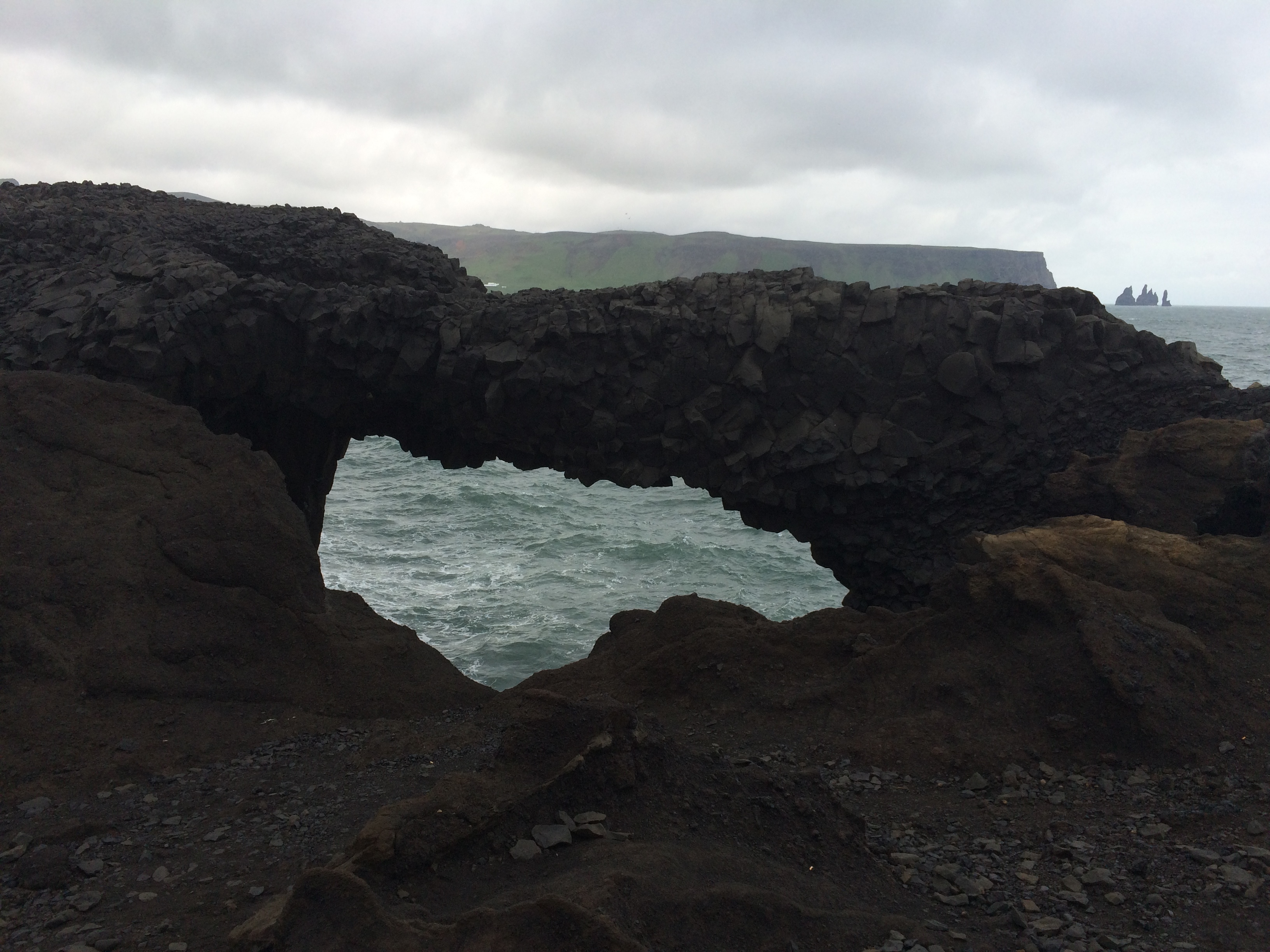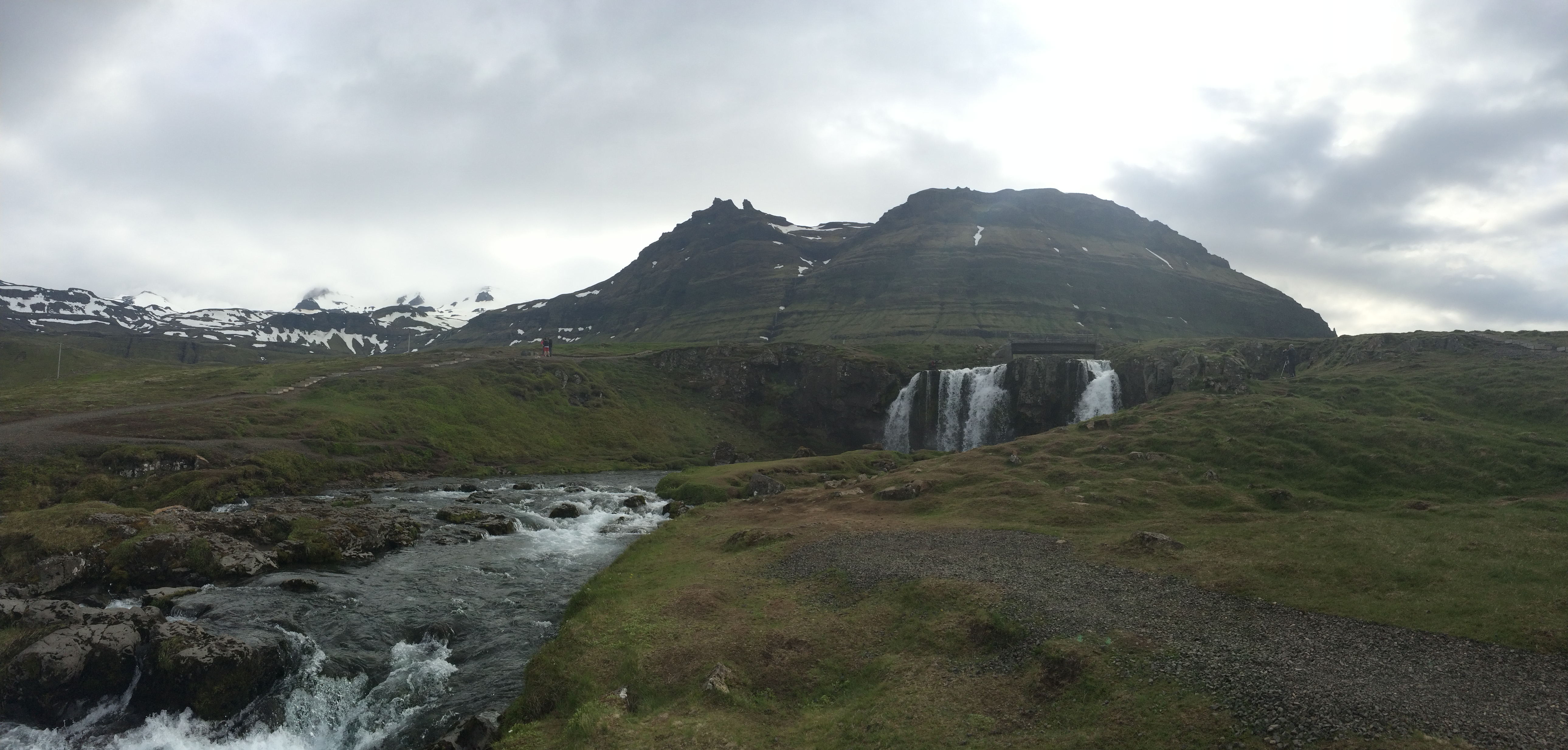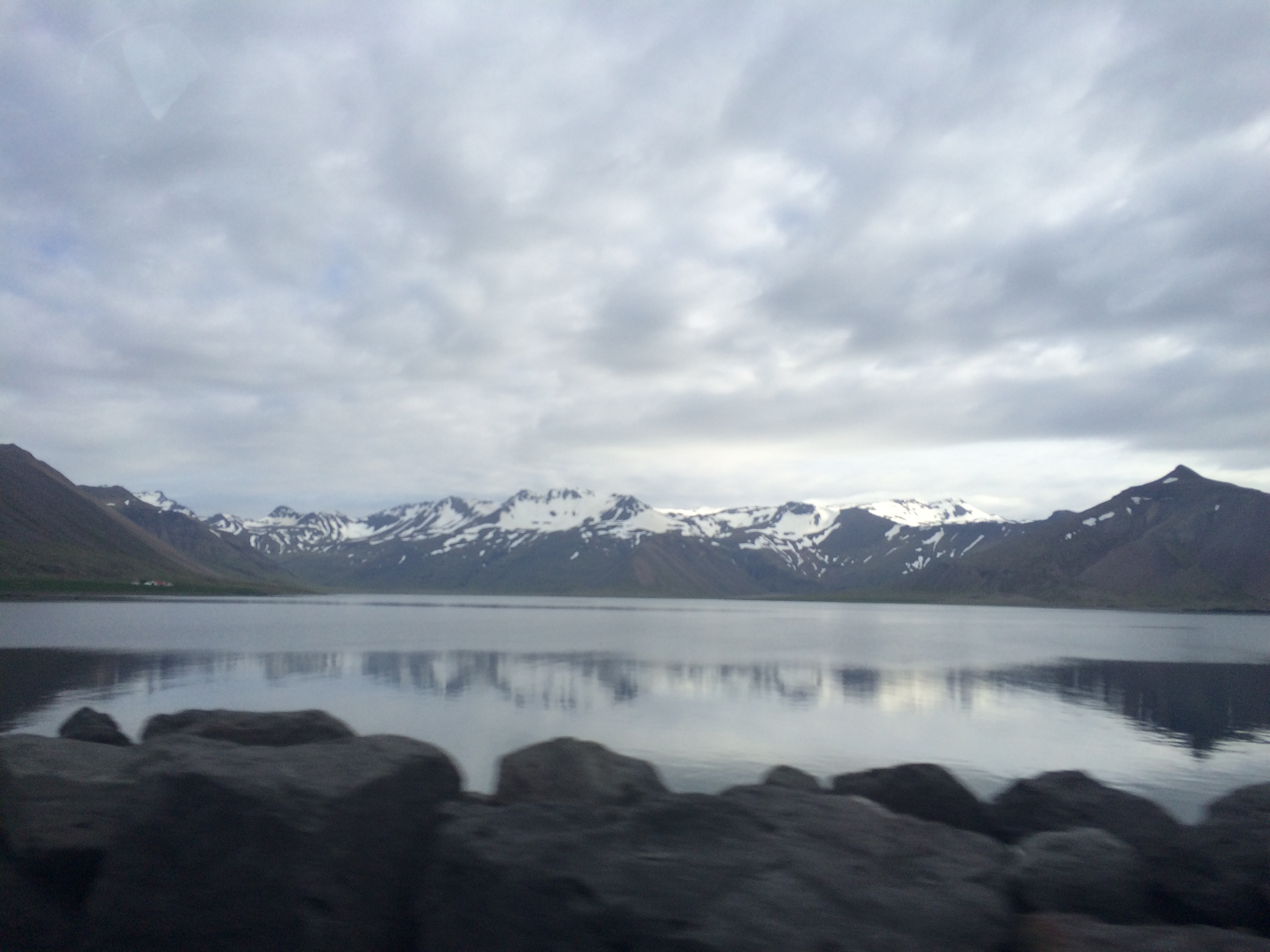Cave near Vík í Mýrdal, Iceland. Formed by cooling of lava during a primeval era and shaped constantly by monstrous tides arriving across the Atlantic Ocean from Antarctica, this cave’s columnar basalt assume psychadelic wavy patterns.
Even more waterfalls
I’d rather be at the beach
Nothing new but something old
Not surprisingly, I’m busy in the clinic (and elsewhere). However, in a few short minutes of downtime, I had a chance to take a look at some photos from Iceland. Among them, I found this meandering river, among vast sheep-grazed plains and framed by tall mountains in the background. It seemed to fit well with my summertime mood.
Don’t go chasing waterfalls …
July 1st!
Yet another breathtaking scene from Iceland (but I don’t remember exactly where I took this photo)
July 1st is an epochal day: it’s when everyone in academic medicine gets booted upwards. Whether it is the transition of a medical student to intern, resident to fellow, or fellow to attending, it represents big changes and unexpected challenges.
This July 1st is the last July 1st that I anticipate being a fellow. That is pretty exciting actually – that I’m finally, inexorably reaching the end of (structured) graduate medical education and finally going to be an independently practicing doctor. I enthusiastically look forward to ensuring that these next 365 days are the most productive of my academic career thus far.
Leadership Demands Measured Optimism
 Reynisdrangar, near Vík í Mýrdal, Southern Iceland
Reynisdrangar, near Vík í Mýrdal, Southern Iceland
Lastly, there is a rugged optimism that’s intrinsic to life on the island. For half of the year, Iceland is enveloped by almost complete darkness, followed by months on end of near complete daylight. Winter is, apparently, brutal but comes with the certainty that a very pleasant summer will come to follow. This extreme seasonal variation prompts a mindset that, as one of our guides said, “there’s always a tomorrow, even if today is not so good.” Moreover, having the foreknowledge that dark days may be ahead makes making good use of the present an even more important priority.
But it’s more than just the seasonal variation. The history of Iceland isa dramatic, and often tragic one. At times, the entire island lost half of its populace. And yet, most who survived chose to stay. They decided to be tough and to make the most of their lot. That shows in their work ethic and in their prosperity.
Of course, the above are generalizations, more or less. And yes, Iceland has had catastrophic failures in leadership, particularly in the financial world in recent yeras. But the lessons remain true nevertheless. Iceland can teach us profound lessons about leadership that we can take from a windswept North Atlantic isle all the way to our homes in middle America and beyond.
Leadership is Informed by Culture

Buðir black church, Snaefellsnes peninsula, Western tip of Iceland
Fourth, culture and tradition should inform leadership. Wherever we went, we were surprised by the influential strength of local culture, and how effortlessly it blends into modern life. Elves, trolls, and fairies, which seem fanciful to us outsiders, are an ingrained aspect of local folklore and belief in their presence continues.
Additionally, despite being over a millennium old, the Icelandic sagas still hold sway and continue to be considered one of the pillars of Icelandic culture. It surprised me to learn that the Icelandic language has not changed much over 1000 years (apart from in vocabulary), attesting to how much stock the people place into their culture.
Similarly, unlike in other Scandinavian countries, despite their advanced levels of socioeconomic development, there is a deference to the religious traditions of the past. In every small fishing town that we encountered, we found a small Spartan church with bells ringing at every hour. Whether these are attended is another matter altogether.
Regardless, the more that I think about it, leaders don’t develop in isolation. Rather, they are the product of culture, and tradition. They often have a role in undermining or reforming these, but nevertheless are products thereof. If we aspire to leadership, we should critically look at our culture and determine how we fit, and how we do not fit, into its bounds.
Health Maintenance is Intrinsic to Leadership
Inside the Thrihnukagigur Volcano
Thirdly, physical health cannot be overlooked. One of the curious traditions that we witnessed was weightlifting of stones. There is great pride (among men. perhaps women) to pick up and carry the largest stones, which are designated as “quarter strength,” “half-strength,” “full-strength,” etc. Arguably, the ability to pick up the heavier stones imbues a sort leadership in and of itself (kind of like the sword in the stone).
Additionally, swimming, football (soccer), and handball are extraordinarily popular. In every town, there appears to be a gym where people, young and old alike, can exercise themselves and keep fit. This extends to the mental sphere, where it is ingrained that healthy minds need healthy bodies.
On a personal level, it is exceptionally important to lead oneself before leading others, and that’s where maintaining physical and mental health is so essential. Moreover, there really isn’t a point of trying to make a difference in the world while you slowly kill yourself in the process and can’t enjoy the fruits of those labors.
A Key to Leadership is the Leverage of One’s Strengths
Secondly, leverage of one’s strengths is key to leadership. Iceland doesn’t have many resources, and through the majority of its existence since the late 9th century, has been hobbled by events completely outside of its control, most notably volcanic activity. Throughout the 15th and 16th century, regular volcanic activity decimated agricultural output and led to mass fluorosis, in turn killing up to 50% of the population.
But nowadays, that liability is recognized to be its greatest strength. Geothermal activity permits Iceland to have bountiful output of electricity (in addition to hydroelectric dams). It also is the source of so much of its tourism revenue. But this change didn’t occur overnight: intense research has been performed in order to develop the technologies necessary to harness geothermal energy, and efforts continue to this very day.
On a personal level, their experiences teach us that strengths and weaknesses are largely what we make of them, and that even though we have limited initial control over these, our understanding and mastery of these strengths/weaknesses and leveraging these in the right way can propel us forward to be leaders.








